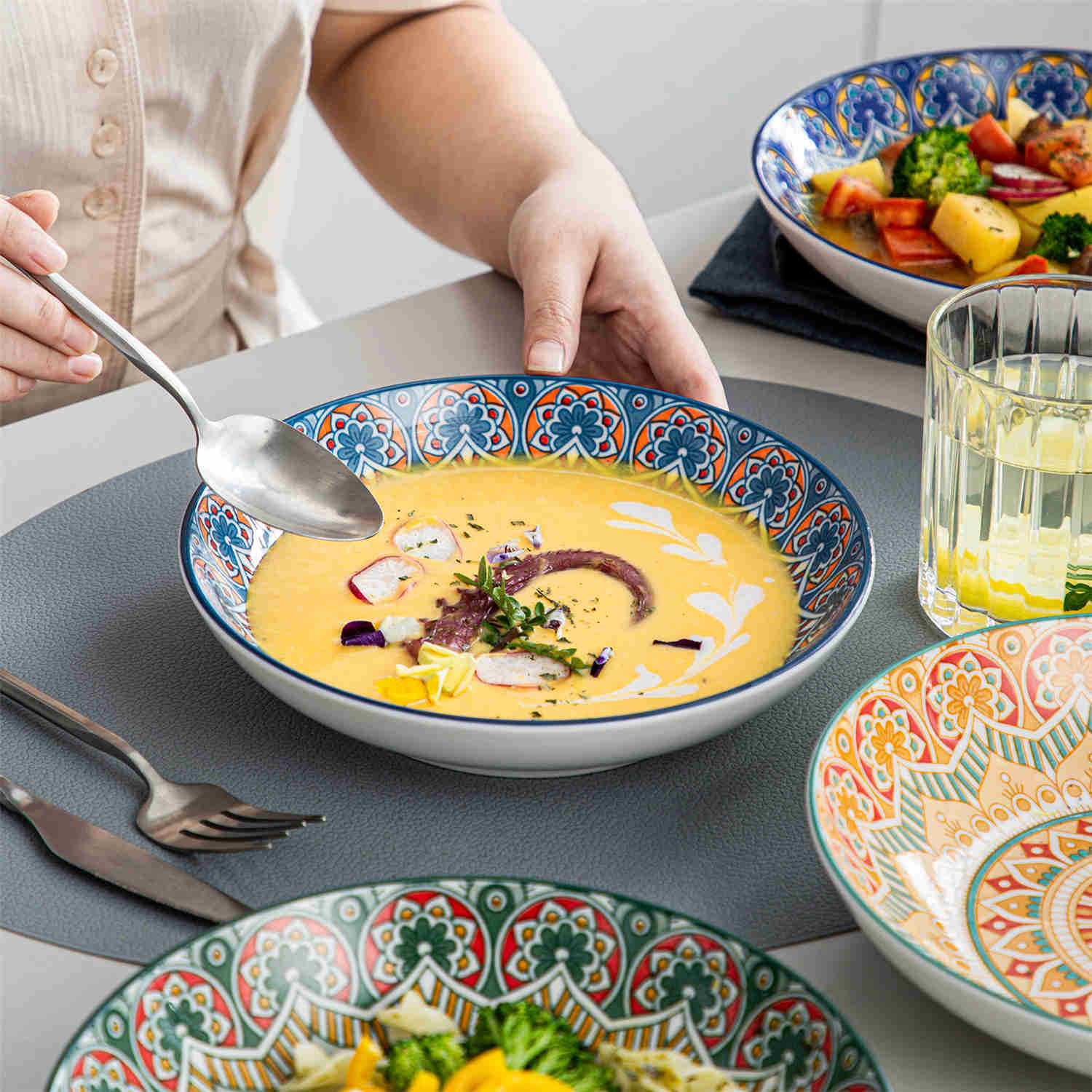Unlock the Secrets: Discover the Art of Choosing the Perfect Soup Bowl!
When it comes to enjoying a warm bowl of soup, the vessel in which it is served can truly make a difference. Choosing the right soup bowl is not just about aesthetics; it's about enhancing the entire dining experience. From family gatherings to intimate dinners, the right bowl can elevate a simple meal into a delightful occasion. With a plethora of options available, understanding the various types of soup bowls, their materials, and their functionalities is essential. Whether you're a culinary novice or an experienced home chef, this guide will help you navigate the world of serving soup bowls, ensuring your next soup experience is both delicious and visually appealing.

Understanding the Different Types of Soup Bowls
Soup bowls come in a variety of styles, each offering unique benefits and aesthetics that can enhance your dining table. Traditional soup bowls are often deep and wide, designed to hold hearty stews and thick soups. These bowls are typically made from ceramic or porcelain, featuring charming designs that evoke a sense of nostalgia. Modern soup bowls, on the other hand, tend to have sleeker, minimalist designs, often constructed from stoneware or glass, appealing to contemporary tastes. Specialty bowls, such as those designed for ramen or pho, may have unique shapes and features, such as a wider lip for sipping broth. Each type serves a specific purpose, and understanding these distinctions can help you choose the right bowl for your culinary creations.
Material Matters: Choosing the Right Composition
The material of your soup bowl plays a crucial role in its functionality and aesthetic appeal. Ceramic bowls are popular for their heat retention and classic appearance. They keep soups warm longer, making them ideal for leisurely meals. Porcelain bowls, known for their elegance, are less porous and can be more resistant to stains, while glass bowls offer a modern touch and allow the vibrant colors of the soup to shine through. Stainless steel bowls, although less traditional, are incredibly durable and perfect for outdoor dining. Each material has its own advantages and can complement different cooking styles, so consider what best suits your needs and preferences when selecting your soup bowls.
Functional Aspects of Serving Soup Bowls
Functionality is key when it comes to serving soup bowls. The size, depth, and shape of a bowl can significantly impact how a soup is enjoyed. For instance, a deeper bowl is ideal for chunky soups, allowing for ample broth and ingredients to be appreciated in every bite. Conversely, a shallower bowl may be more suitable for clearer broths, showcasing the soup’s color and clarity. Additionally, the weight of the bowl can affect how easy it is to handle, especially when serving hot soups. Investing in a range of bowl types can ensure that you have the perfect vessel for any soup you prepare, making your dining experience more enjoyable.
Choosing Bowls for Different Types of Soup
Not all soups are created equal, and selecting the right bowl can enhance the enjoyment of each type. For hearty, chunky soups like minestrone or chili, opt for bowls with a larger diameter and depth to accommodate the ingredients. For lighter broths, such as chicken noodle or miso, consider a bowl with a narrower base to retain the warmth and flavor of the soup. Pureed soups, like butternut squash or tomato, often look stunning in wide, shallow bowls that allow for creative garnishing. Understanding the nuances of each soup type will guide you in choosing the appropriate bowl that complements its characteristics.
Design and Aesthetics: Enhancing Your Table Setting
The design of your soup bowls can significantly influence the overall aesthetic of your table setting. Choosing bowls that reflect your personal style can enhance the dining experience for both you and your guests. Consider the color and pattern of your soup bowls—bright, bold colors can add a playful touch to a casual meal, while understated, neutral tones can lend an air of sophistication to a formal gathering. Additionally, the shape of the bowls can contribute to the overall visual appeal; round bowls are classic, while square or uniquely shaped bowls can serve as conversation starters. The right design choices can create a harmonious and inviting atmosphere at your dining table.
Matching Soup Bowls with Dinnerware
For a cohesive and polished look, coordinating your soup bowls with other dinnerware pieces is essential. Consider the color palette and design motifs of your plates and utensils when selecting soup bowls. Mixing and matching can be fun, but aim for a balance that ties your table setting together. If you have patterned dinnerware, opt for solid-colored soup bowls to avoid overwhelming the visual space. Conversely, if your dinnerware is simple, you might choose a more decorative bowl to create a focal point. Thoughtful coordination will elevate the entire meal presentation, making it feel truly special.
Final Thoughts on Choosing the Perfect Soup Bowl
Choosing the perfect serving soup bowl is an art that combines functionality, aesthetics, and personal preference. From understanding the diverse types and materials to considering the functional aspects and design coordination, each element plays a crucial role in enhancing your dining experience. As you explore the world of soup bowls, remember to consider the types of soups you enjoy and the occasions for which you are serving them. By selecting the right bowl, you not only elevate your meals but also create memorable dining experiences that you and your loved ones will cherish.
 Séries et Vidéos
Séries et Vidéos 

